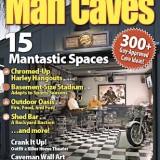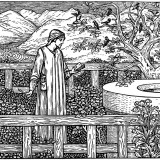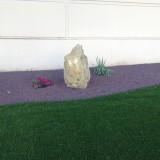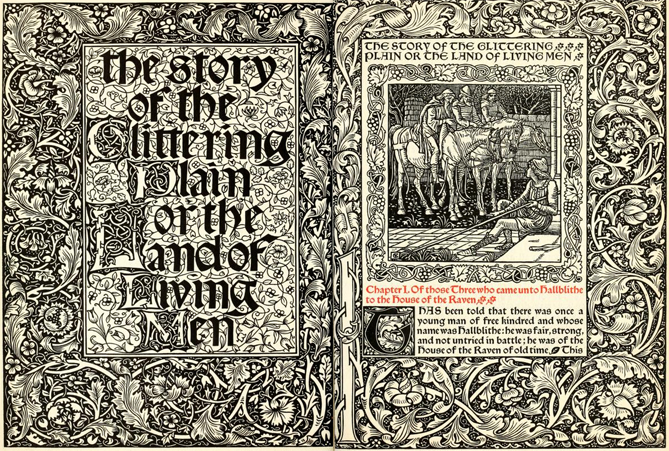
Fredric Jameson begins his essay “Utopia as Replication” (Valances of the Dialectic. New York, Verso, 2010) with the example of Los Angeles’ freeways, a kind of new order superimposed on an older kind of city. In the new Freeway city cars hover and over preexisting, denser, centralized spaces. In the collision of these two urbanities a new kind of city emerges, one that we’re all familiar with. The freeway builder’s utopian promise of speed and liberty delivers, instead, exurban sprawl, congestion and waves of urban decay and gentrification. That utopian vision of Freeway building is personified in mid-century figures like Robert Moses and the city fathers of early 20th century Los Angeles.
But Jameson goes on to question, “does anyone believe in progress any longer? . . . are the architects and urbanists still passionately at work on Utopian cities?” An answer to Jameson’s question came this week in an astonishing and horrifying set of PowerPoint slides for the I-710 Corridor Aesthetic Master Plan released to the world via StreetsblogLA’s Twitter. The 710 freeway embodies the global, neoliberal economic order. It’s the main trucking route for all the crap from China that flows into the Port here and towards the massive distribution warehouses of Amazon and Wallmart. One of the many casualties of the global economy are the poorest residents of LA County who live in the pollution plume of the 710.
These PowerPoint slides prove that, yes, the engineers (architects?) are still designing stuff but they don’t believe in it anymore. It’s just a job. I suspect that at least some of them know that their work only makes things worse. At the end of the day these engineers and consultants get on the very same congested freeways they don’t believe in to commute to their exurban homes with the better schools. Gone is Moses’ utopian bluster, replaced with the most banal office PowerPoint slide pixel pushing, probably outsourced to some bored consultant.

This particular slide may be the best ever proof of the thesis of David Graeber’s Bullshit Jobs book, that perhaps half of all people in Western countries are engaged in useless, soul-sucking office work. I mean, spend a moment appreciating the visual chaos that is this image. Ask yourself if it has any purpose whatsoever other than fulfilling some checkbox on a list of meaningless public engagement metrics. What possible purpose does this slide fulfill?

Then appreciate this bleak slide depicting a vista we’re all too familiar with.

Of this slide StreetsblogLA says in Twitter, “And, hey, @metrolosangeles @CaltransDist7 what’s this beige-clad blond businessman doing walking across the 710 Freeway in Southeast Los Angeles? Why not depict Latino families who depend on these bridges to get to school?” Indeed, that beige-clad business man has never seen the outside of his Tesla when out and about. Meanwhile the car-less in this city, largely Latino and African-American, have faced a striking increase in pedestrian and bike fatalities in the past year.

The French have an expression for this one, “a bandage on a wooden leg.” Here in the U.S. we might say, “the cherry on the shit sundae.” Create a bleak, hostile landscape and put up some kind of bland mural that serves only to accumulate diesel particulate.
Jameson acknowledges something that the writer and philosopher Mark Fisher later built on, how stuck we are in the way things are, unable to imagine a different way of doing things. But that’s precisely what we have to do: imagine and tell stories about a better world. Jameson concludes the essay,
Utopology revives long dormant parts of the mind, unused organs of political and historical and social imagination which have virtually atrophied for lack of use, muscles of praxis we have long since ceased exercising, revolutionary gestures we have lost the habit of perform- ing, even subliminally. Such a revival of futurity and of the positing of alternate futures is not itself a political program nor even a political practice: but it is hard to see how any durable or effective political action could come into being without it.

We lost Mark Fisher in 2017 to suicide. After his death his students painted a quote from his book Capitalist Realism. “Emancipatory politics must always destroy the appearance of a ‘natural order’, must reveal what is presented as necessary and inevitable to be a mere contingency, just as it must make what was previously deemed to be impossible seem attainable.” Freeways may seem inevitable and necessary but they’ve been torn down in many cities now. We can do the same here in Los Angeles. Let’s stop composing Powerpoint slides and break out the dynamite.





As well as being a horrifying vision of a dystopian future, this is a truly awful example of how PowerPoint should not be used. Edward Tufte has written a small book on this subject which is well worth reading if you do not want to bore and/or confuse your audiences with your PowerPoint presentations: https://www.edwardtufte.com/tufte/powerpoint.
During my family history research, I make heavy use of Google Street View and historic Sanborn Maps of urban areas. These tools help me to see where my ancestors lived in the past. As seen on street view–some of the buildings still stand–and some are in surprisingly good condition–while others are sadly dilapidated. Others have vanished into parking lots and highway overpasses. During this type of research into Brooklyn, I encountered The Great Wall of Furman.